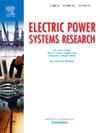Optimal sizing of Hybrid Solar-Wind Battery System (HSWBS) using secretary bird optimization
IF 4.2
3区 工程技术
Q2 ENGINEERING, ELECTRICAL & ELECTRONIC
引用次数: 0
Abstract
Considering rising carbon emissions raise the average global temperature, there is serious concern about the state of the earth's climate. In this sense, renewable energy sources appear to be the best option. It can lower the rate of world energy consumption. This study aims to assess stand-alone hybrid solar-wind battery systems' (HSWBS) technical, economic, and environmental capabilities. The hybrid PV/wind/battery, PV/battery, and wind/battery power systems for the research area are optimized using a novel optimization technique called secretary bird optimization (SBO). The hybrid system is developed using the site location's load requirement, PV, and wind characteristics. MATLAB software was used for all of the simulations. For the HSWBS sizing application, however, the SBO algorithm fared better than the HHO and HO in terms of convergence time, lowest cost of energy (LCE), Loss of Power Supply Probability (LPSP), and overall cost. With a total cost value of Rs. 6.5204e + 08, the HSWBS is the most economical option when utilizing SBO. Additionally, the SBO approach is accurate and performs better than the HO and HHO algorithms, as shown by findings like LCE and LPSP.
基于秘书鸟优化的混合太阳能-风能电池系统尺寸优化
考虑到不断上升的碳排放提高了全球平均气温,人们对地球气候状况感到严重担忧。从这个意义上说,可再生能源似乎是最好的选择。它可以降低世界能源消耗的速度。本研究旨在评估独立混合太阳能-风能电池系统(HSWBS)的技术、经济和环境能力。研究区域的光伏/风能/电池、光伏/电池和风能/电池混合动力系统采用一种名为秘书鸟优化(SBO)的新型优化技术进行优化。混合系统是根据场地的负载要求、光伏和风力特性开发的。所有仿真均采用MATLAB软件进行。然而,对于HSWBS分级应用,SBO算法在收敛时间、最低能量成本(LCE)、电源损失概率(LPSP)和总成本方面优于HHO和HO。当使用SBO时,HSWBS是最经济的选择,总成本为6.5204亿卢比。此外,SBO方法比HO和HHO算法更准确,性能更好,如LCE和LPSP等研究结果所示。
本文章由计算机程序翻译,如有差异,请以英文原文为准。
求助全文
约1分钟内获得全文
求助全文
来源期刊

Electric Power Systems Research
工程技术-工程:电子与电气
CiteScore
7.50
自引率
17.90%
发文量
963
审稿时长
3.8 months
期刊介绍:
Electric Power Systems Research is an international medium for the publication of original papers concerned with the generation, transmission, distribution and utilization of electrical energy. The journal aims at presenting important results of work in this field, whether in the form of applied research, development of new procedures or components, orginal application of existing knowledge or new designapproaches. The scope of Electric Power Systems Research is broad, encompassing all aspects of electric power systems. The following list of topics is not intended to be exhaustive, but rather to indicate topics that fall within the journal purview.
• Generation techniques ranging from advances in conventional electromechanical methods, through nuclear power generation, to renewable energy generation.
• Transmission, spanning the broad area from UHV (ac and dc) to network operation and protection, line routing and design.
• Substation work: equipment design, protection and control systems.
• Distribution techniques, equipment development, and smart grids.
• The utilization area from energy efficiency to distributed load levelling techniques.
• Systems studies including control techniques, planning, optimization methods, stability, security assessment and insulation coordination.
 求助内容:
求助内容: 应助结果提醒方式:
应助结果提醒方式:


